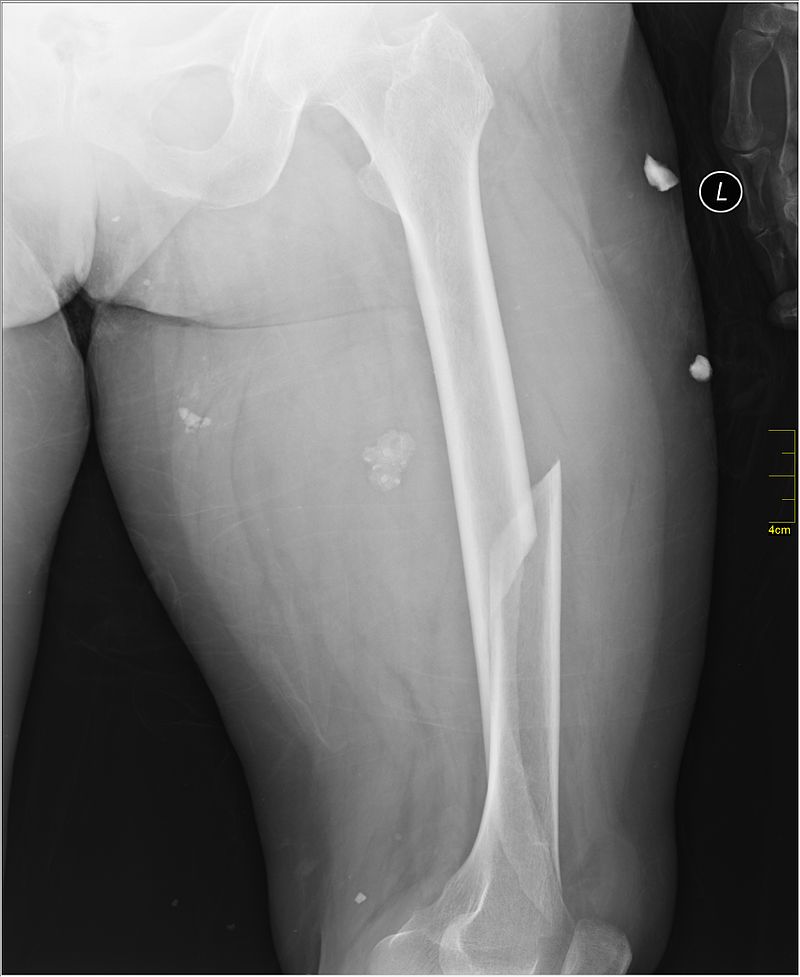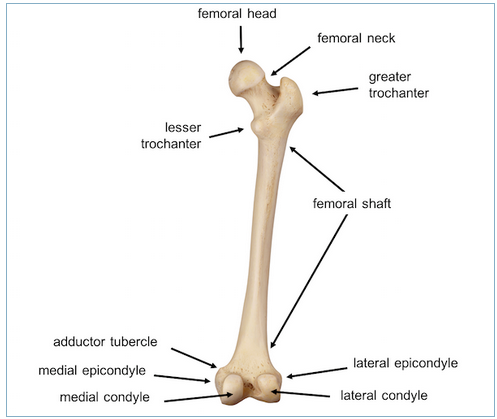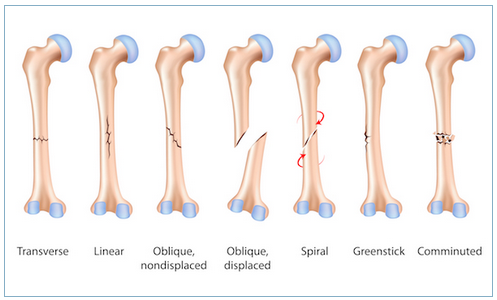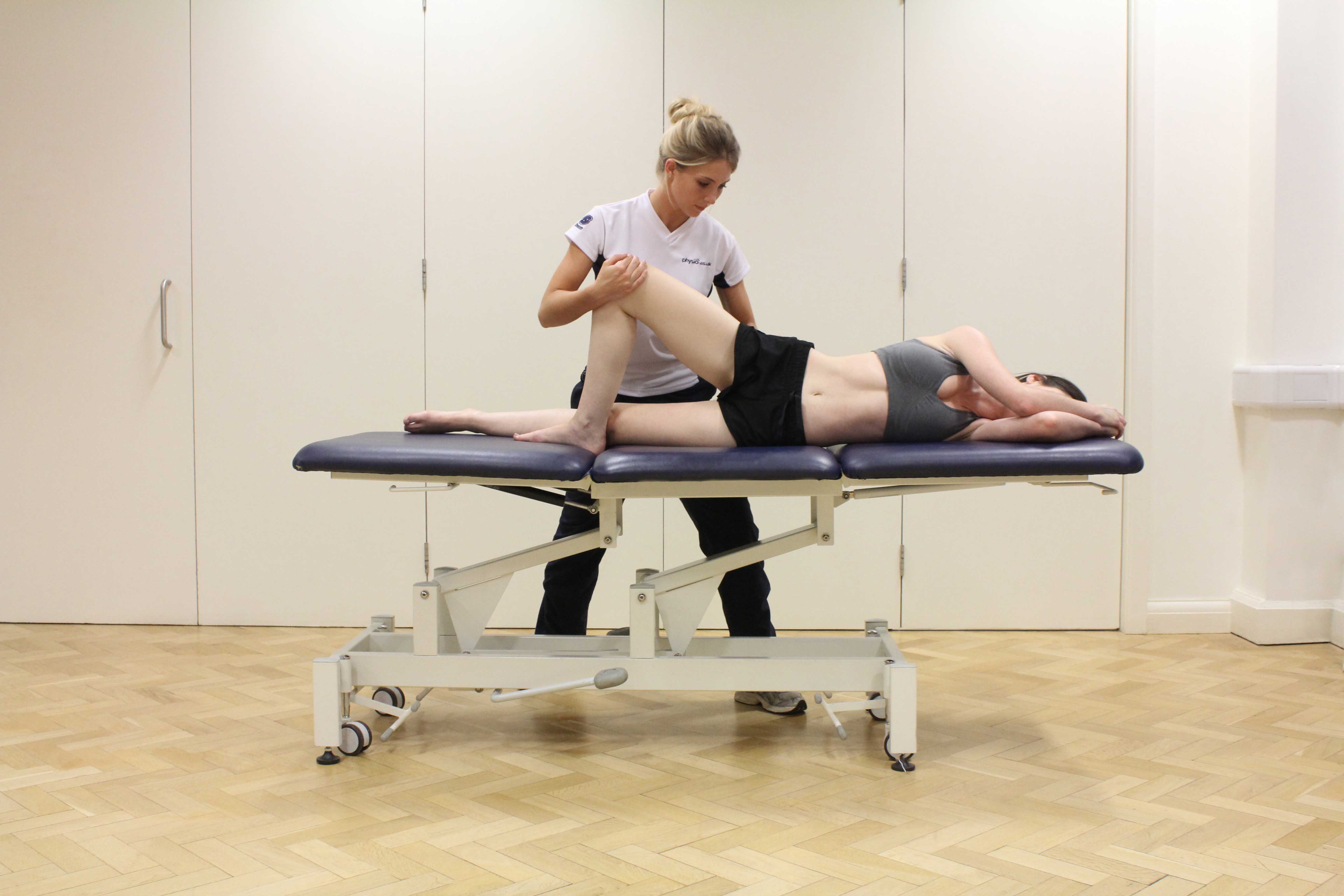nalco group
bone, muscle & joint pain physio
BOOK NOW / WHATSAPP ABOUT YOUR PAIN OR INJURY
- NOVENA 10 Sinaran Drive, Novena Medical Center #10-09, Singapore 307506
- TAMPINES 9 Tampines Grande #01-20 Singapore 528735
- SERANGOON 265 Serangoon Central Drive #04-269 Singapore 550265
Home > Blog > Physiotherapy > Conditions > Femur Fracture Physiotherapy
Femur Fracture Physiotherapy

A femur fracture (also termed as "femoral fracture") is a break, crack, or crush injury of the thigh bone. It is sometimes referred to as a "hip fracture" or a "broken hip" if the femoral fracture is in the upper part of the bone near the hip-joint area.
Femur
fractures that are simple, short cracks in the bone typically do not
require corrective invasive surgery. But...fractures that break completely through the
bone, or worse, if the bone is displaced or crushed, will require
immediate surgery.
What is a Femur Fracture?

Anatomy of the femur including the long bone shaft
A femur fracture is a break in the thigh bone, or femur.
The femur can be fractured generally in 3 areas:
- the head/neck of the bone (the upper end, near the pelvis)
- the main shaft of the bone
- the lower end near the knee
Injury occurs when a high-force blow hits the thigh bone and this can be caused by either the body weight of the person (as in a fall) or a collision with an object (as in a motor vehicle accident).

The most common causes of femur fracture are:
- High-speed trauma, such as a motor vehicle or motorcycle accident, a fall from a high place, or an injury during extreme or contact sports
- A preexisting bone disease that weakens the bone, such as a tumor, Paget disease, bone cysts, or osteoporosis
what does a femoral fracture feels like
A femur fracture can and will cause extreme pain in the upper leg area. You may experience:
- An inability to move the leg or stand
- Swelling in the hip area
- Bleeding from an open wound if the bone breaks through the skin
- A change in the shape (deformity) of the thigh bone area
- Hematoma (a localized collection of blood causing discoloration) or severe bruising in the area of the fracture
- Muscle spasms in the thigh
- Numbness, tingling in the thigh or leg
Caution: A fractured femur may be life-threatening.
Death can occur following a femur fracture from complications such as blood clots, pneumonia, or infection.
Symptoms of life-threatening injury include:
- Heavy or uncontrollable bleeding
- A bone fragment protruding through the skin
- Confusion or loss of consciousness
People above 60 years of age with femur fractures that do not penetrate through the skin have a death rate of 17% and a complication rate of 54%.
Unfortunately, only about 25% of those people who suffer a femur fracture return to the same level of activity they had before the injury.
How Is It Diagnosed?
A femur fracture is a serious injury that is diagnosed by a doctor, usually in an accident and emergency room. The doctor will check for all the signs and symptoms of a fracture as listed above.
An x-ray or CT scan will help confirm the fracture.
The fracture can be a simple crack or severe enough to break the femur into pieces that can separate or even pierce through the skin.
Treatment of a femur fracture usually involves immediate admission to
the hospital and surgery, as well as extensive treatment in the
hospital or a rehabilitative facility. We do see and treat a number of femoral fracture injury physiotherapy.
Full recovery from a femur fracture can take anywhere from 12 weeks to 52 weeks; however, most people begin walking with the help of our senior physiotherapist in the first day or two after injury and/or surgery.
how our senior physiotherapists can help

We will design a specific treatment program to speed your recovery. This femur fracture physiotherapy program includes exercises and treatments you should do at home to help you return to your normal life and activities.
We help you recover by helping you improve your:
- Pain level
- Leg, hip, and back motion
- Strength
- Standing balance
- Walking ability
- Speed of healing
- Speed of return to activity and sport
The First 24-48 Hours
Following injury or surgery, we will help you:
- Get up out of bed to stand and walk. Early mobilization (walking, standing, moving around) will help prevent blood clots and other complications.
- Learn to use crutches or a walker.
Reduce Pain
Your physical therapist may use different types of treatments and machines to control and reduce and relieve your pain. These treatments may include
- cold therapy
- heat therapy
- ultrasound therapy
- gentle electrical stimulation
- taping
- exercises
- and special skilled treatments performed with the hands called "manual therapy" techniques
Improve Motion
We will choose specific activities and treatments to help restore normal movement in the leg and hip. These might start with passive motions that we apply to your leg and hip joint, and progress to active exercises and stretches that you perform yourself.
Improve Strength
Certain exercises will benefit your healing at each stage of recovery, and we will design a unique treatment program just for you. We will choose and teach you the appropriate exercises that will restore your strength, power, and agility.
These may include using free weights, stretchy bands, weighted pulleys, cardio machines, and weight machines.
Speed Recovery Time
We are trained and experienced in choosing the treatments and exercises to help you heal, get back to your normal life, and reach your goals faster than you might be able to on your own.
Return to Activities
We will collaborate with you to decide on your recovery goals, including return to work and sport, and will design your treatment program to help you reach those goals in the safest, fastest, and most effective way possible. We will use
- machines
- manual techniques
- exercises
- work re-training activities
- and sport-specific techniques and drills
to help you achieve your goals.
Prevent Future Reinjury
We can recommend a home-exercise program to strengthen and stretch the muscles around your hip, upper leg, and core to help prevent future problems. These may include strength and flexibility exercises for the
- quadriceps
- adductor
- abductor
- hamstring
- and core muscles
